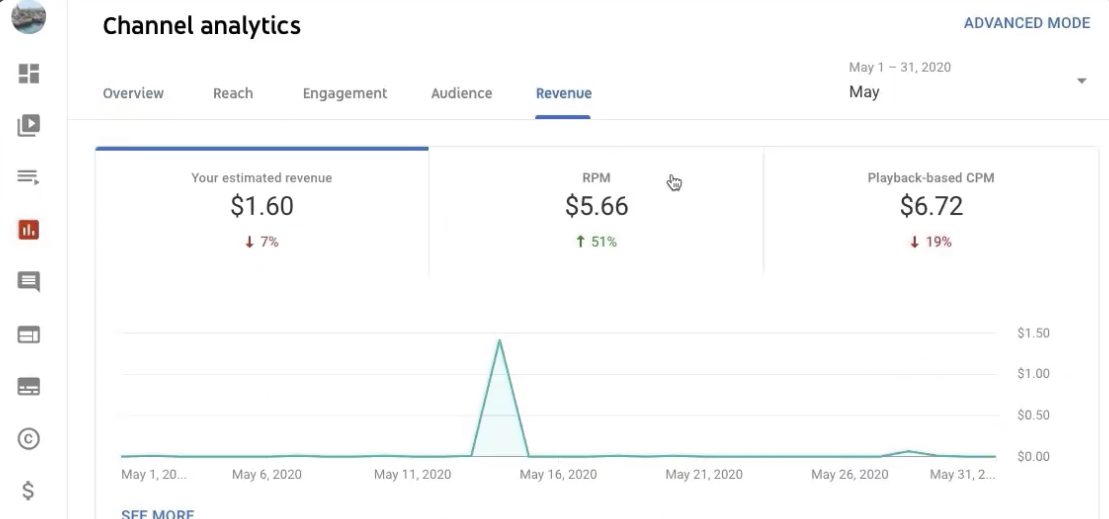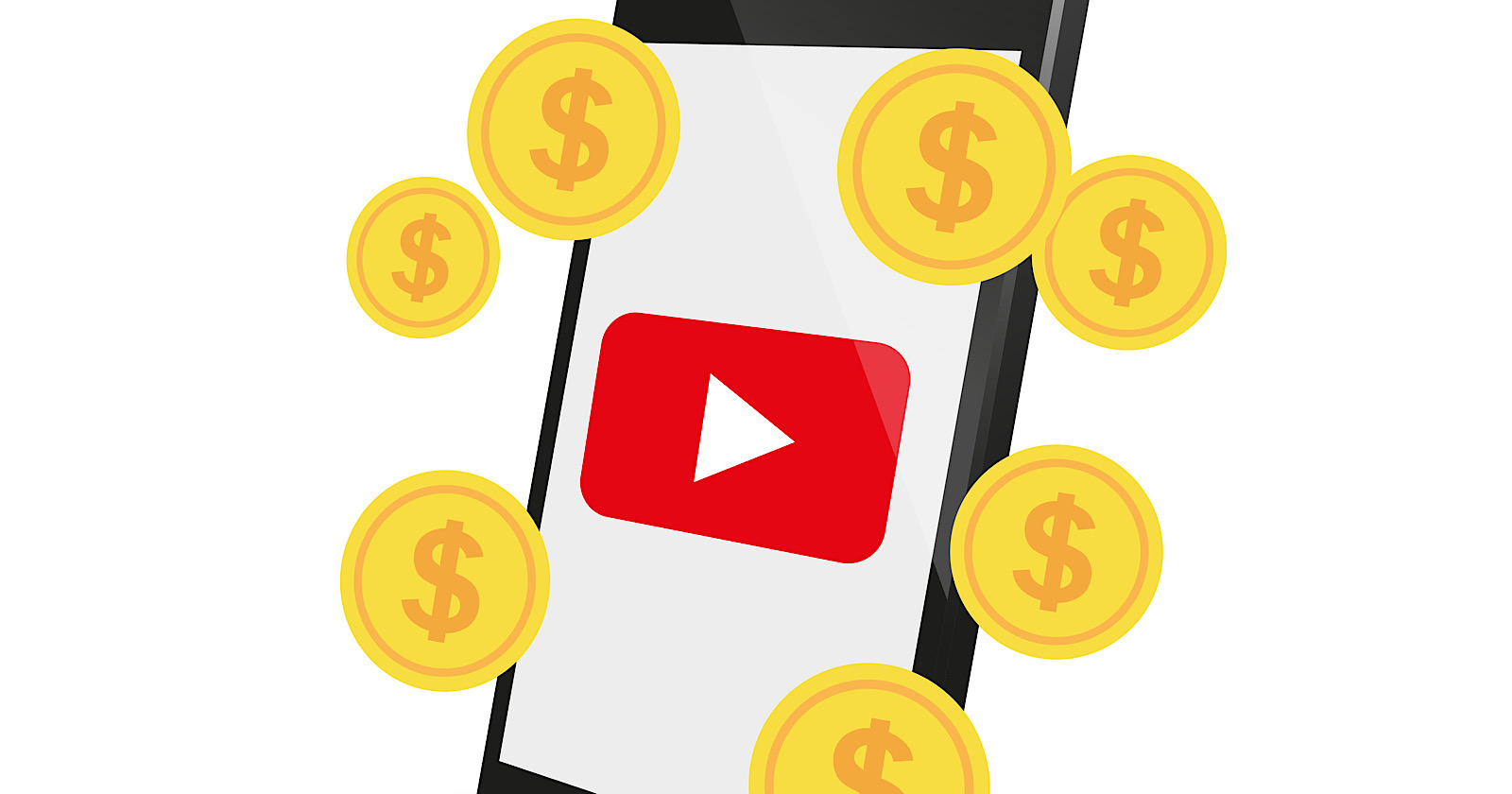YouTube is rolling out a new metric in the channel analytics section that shows creators how much revenue they’re earning relative to video views.
Introducing a simple metric that compares total revenue against total views is expected to give creators a reliable way of monitoring fluctuations in revenue over time.
Revenue per mille (RPM) shows how much a creator earned per 1,000 views. It’s calculated by multiplying all revenue reported in YouTube Analytics by 1,000, and then dividing it by total views in the same time period.

“Because it takes into account all your revenue and all your views reported on YouTube Analytics, RPM provides the most holistic measurement of the overall rate at which you earn money on YouTube.”
It’s recommended that creators regularly review and evaluate their RPM in order to identify ways to improve and earn more money.
Related: Top YouTube Searches This Year
The Difference Between RPM and CPM
Cost per mille (CPM) measures the average amount of money advertisers are willing to pay to show ads in a creator’s videos.
CPM is said to be a less efficient way of measuring revenue for a number of reasons.
First, it only takes monetized videos into account, not all videos.
Secondly, CPM shows what advertisers are paying, not what creators are earning.
YouTube says RPM is a better metric for creators because it shows how much they earn and takes into account:
- Total revenue reported in Youtube Analytics including ads, YouTube Premium, Channel Memberships, Super Chat and Super Stickers.
- Total number of views from your videos, including the ones that are not monetizing.
- The actual revenue earned after revenue share.
Creators should expect the RPM metric to be lower than CPM because it’s calculated using revenue earned after YouTube takes its cut.
A lower RPM compared to CPM is normal and does not mean you’re earning less money.
Related: CPM vs. eCPM vs. RPM: What’s the Difference?
The Importance of RPM for YouTube Creators
Until now, YouTube creators have not had such an efficient way of measuring how much they’re earning across the entire platform.
To be fair, such a metric was never needed until YouTube started expanding the ways in which creators are eligible to earn money.
Previously, the only way creators could earn money directly from YouTube was through ads in videos.
YouTube has since introduced different ways for viewers to spend money to support their favorite creators.
Now, in addition ad revenue, YouTube creators can also generate income through:
- Views from YouTube Premium accounts
- Channel memberships
- Super Chats
- Super Stickers
Channel memberships were introduced as YouTube’s answer to sites like Patreon where fans can pay creators directly to receive premium content.
Super Chats and Super Stickers were introduced when YouTube started expanding into live streaming. They’re similar to buying bits and making donations on Twitch.
For active channels that are regularly publishing videos and hosting live streams, RPM is a brilliantly simple way to measure ROI.
Let’s say you’ve recently incorporated live streaming into your YouTube marketing strategy, but you’re not sure how well it’s working out for you.
Live viewers are buying Super Chats and Super Stickers, but the time spent streaming is taking you away from recording other content.
You can determine if your live streaming efforts have been a net positive for your channel by monitoring the change in RPM.
If RPM goes down, despite all the Super Chats & Stickers flowing in, then you may decide to refocus that effort on publishing regular videos instead.
RPM is now available to all monetizing creators so they can take advantage of it to measure their revenue performance over time and make more informed decisions going forward.
Source: YouTube Help





